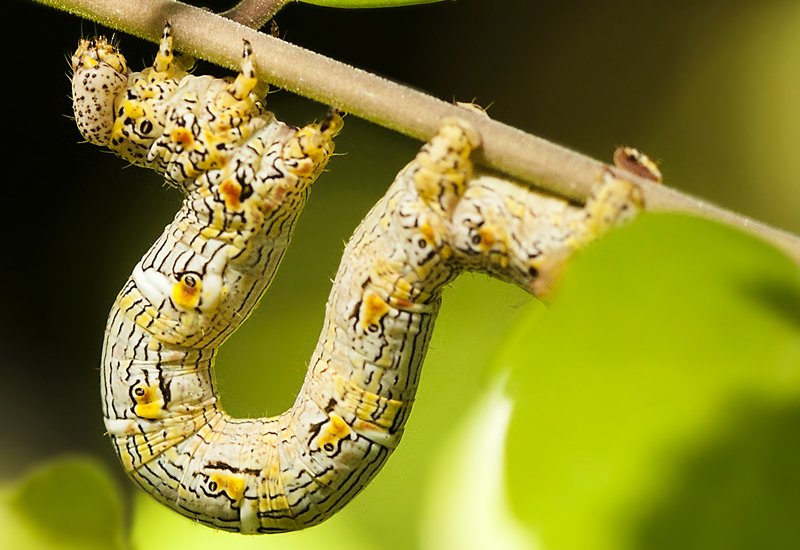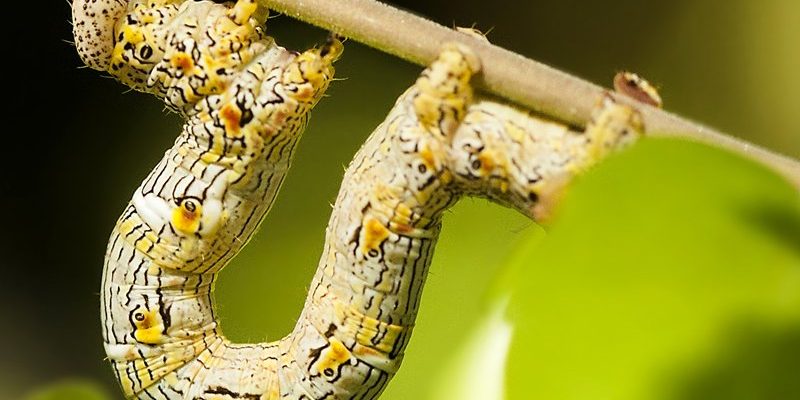
Inchworms are not just cute; they’re incredibly fascinating when you dig deeper into how they protect themselves. From their color-changing abilities to their sneaky behavior, they’ve got quite the repertoire for evading predators. It’s almost like a secret life that plays out right in front of us, yet we rarely notice. So, let’s take a close look at how these clever critters use camouflage to survive in the wild.
What Are Inchworms?
Before we dive into camouflage, let’s get to know these little guys better. Inchworms, which are actually the larvae of certain moths, belong to the Geometridae family. Their name comes from their unique movement—they “inch” along as they creep forward, drawing their bodies into a loop. This movement isn’t just charming; it’s also an effective way to stay low and hidden from predators.
These creatures are typically green or brown, allowing them to blend into their natural habitats like leaves and twigs. Why is this important? Well, inchworms are not very fast, so their best defense is to hide in plain sight. Imagine wearing a camouflage outfit during a game of hide-and-seek; the less visible you are, the better your chances of staying safe!
The Art of Camouflage
Camouflage is not just about matching colors; it’s about blending in with the environment. Inchworms are experts at this. Their body shapes and colors can match the bark of trees or the leaves they sit on, making them hard to spot. Here’s the thing: predators like birds or lizards have sharp eyesight, but a well-camouflaged inchworm can be nearly invisible.
Did you know that the effectiveness of an inchworm’s camouflage also depends on the season? As leaves change colors in the fall, inchworms may subtly adapt their color to maintain that vital cover. It’s like they have a built-in wardrobe that changes with the weather!
How Does Color Affect Camouflage?
The colors of inchworms can vary based on what they eat and the environment they inhabit. For instance, if an inchworm munches on green leaves, it’s likely to take on a green hue itself. This isn’t just luck; it’s a survival strategy. By eating specific plants, they can mimic the colors around them, making it trickier for predators to find them.
Interestingly, some inchworms can even temporarily change their colors when threatened. This ability helps them adapt quickly to different surroundings! Talk about being resourceful in the face of danger.
Behavioral Camouflage
Inchworms don’t just rely on color to stay safe; they also exhibit some pretty clever behaviors. When threatened, they often freeze in place and adopt a posture that mimics a twig or leaf. By doing this, they become even harder to spot. Imagine you’re playing hide-and-seek, and you suddenly turn into a bush—you’d be pretty hard to find, right?
Another tactic they use is to move slowly and deliberately. Instead of darting quickly, which might attract attention, inchworms take their time, inching along as if they were just part of the scenery. This slow-paced motion can easily be mistaken for natural movements of the environment.
Choosing the Right Spot
Where inchworms choose to hang out also plays a big role in their camouflage strategy. They typically stay on the undersides of leaves where they’re less likely to be seen. By selecting hidden spots, they reduce the risk of being discovered by hungry predators. It’s like picking the best spot to camp out during a hike—stay hidden, stay safe!
The Role of Evolution in Camouflage
Over time, evolution has shaped the inchworm’s camouflage skills. Those inchworms that could blend in better were more likely to survive and reproduce. This natural selection has led to generations of inchworms equipped with enhanced camouflage capabilities.
In fact, researchers believe that camouflage has become so finely tuned in some species that it’s almost like a race—predators get better at spotting them, and inchworms get better at hiding. It’s a classic example of survival of the fittest, where each side adapts to the other in a fascinating dance of evolution.
Other Insects’ Camouflage Strategies
Inchworms aren’t the only insects that rely on camouflage. Many other species, like stick insects and leaf insects, use similar strategies to avoid predators. While stick insects look like branches and leaf insects resemble actual leaves, inchworms have their own unique charm.
This variety in camouflage across the insect world showcases nature’s creativity and resourcefulness. It’s as if each insect has a specific role to play in a complex game of hide-and-seek, where creativity and adaptability determine success.
Why Camouflage Matters
Understanding how inchworms use camouflage isn’t just a fun fact—it sheds light on the importance of biodiversity and ecosystems. These little creatures play a role in their environment, helping to maintain the balance of the food chain. Their survival impacts other species, including the birds that prey on them.
Furthermore, studying their camouflage offers insights into evolutionary processes and adaptation, which can inspire fields like robotics and design. Nature has a way of teaching us valuable lessons about innovation and resilience.
The Bigger Picture
By appreciating how inchworms and other insects use camouflage, we gain a deeper understanding of our surrounding ecosystems. This awareness can help promote conservation efforts. After all, the more we know about these fascinating creatures, the more we can appreciate and protect their habitats.
Inchworms may seem small and unassuming, but their ability to use camouflage to evade predators is truly remarkable. Their clever adaptations—from color changes to strategic behavior—show us just how intricate and beautiful nature can be. The next time you spot an inchworm, take a moment to appreciate the hidden world of survival skills that lies beneath the surface.
In the grand scheme of things, even the tiniest creatures play essential roles in our ecosystems. By learning about inchworms and their camouflage, we can cultivate a greater respect for all of nature’s wonders. So, let’s celebrate these little masters of disguise and the incredible ways they navigate the world around them!

